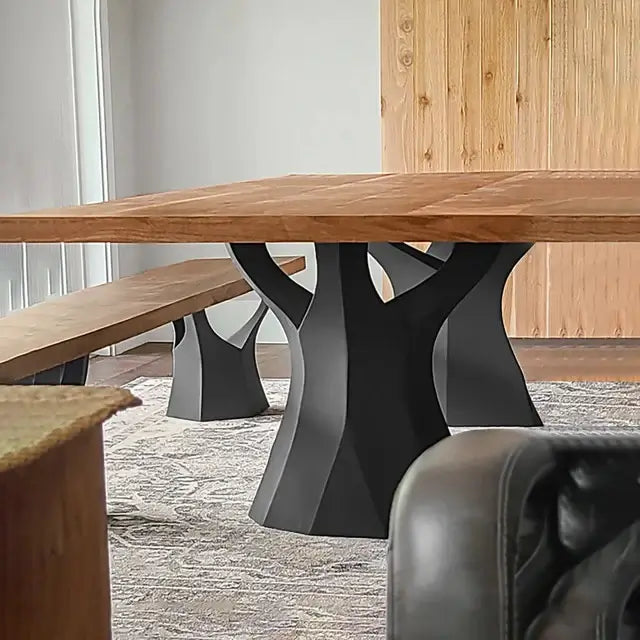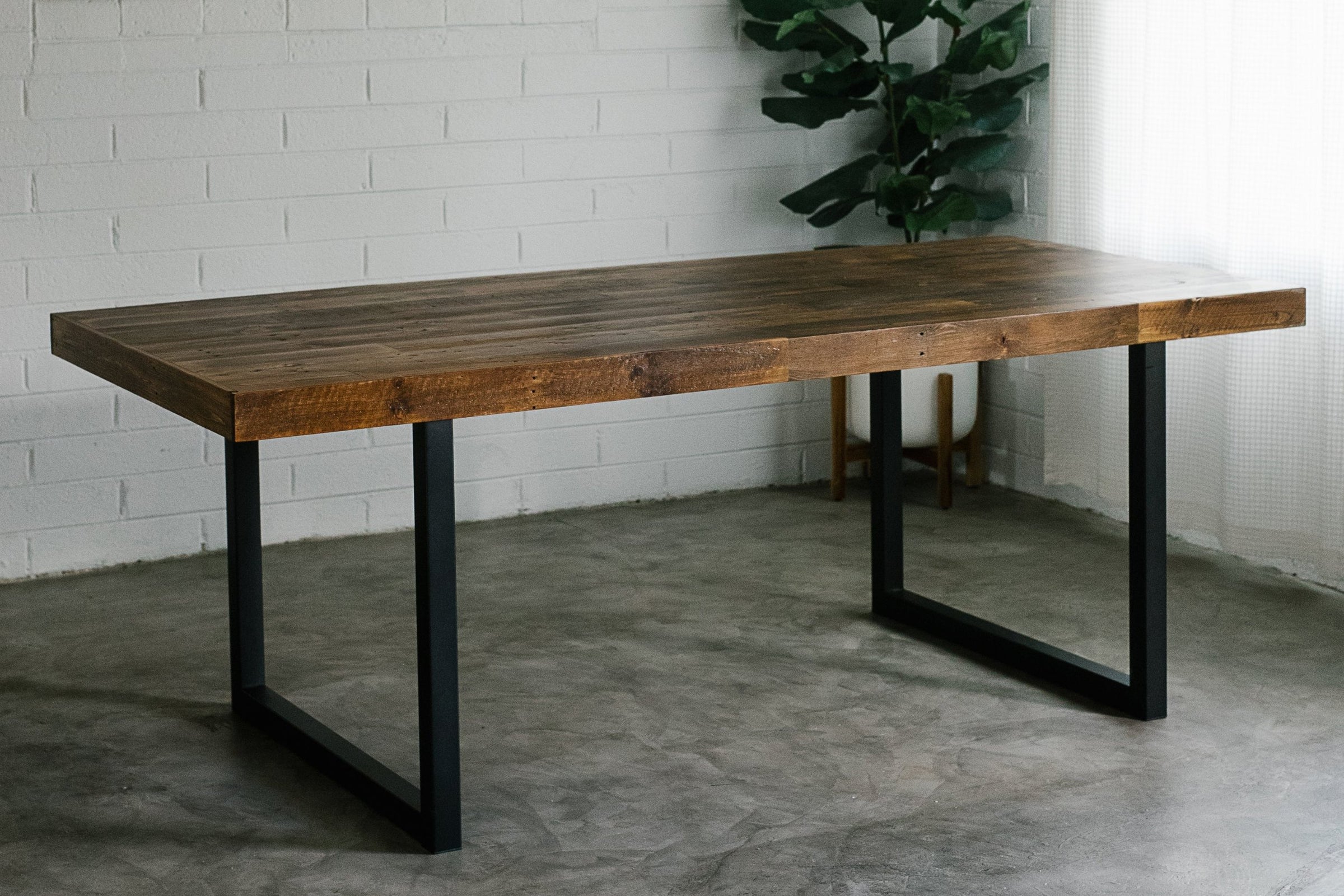Develop Stunning Furnishings with Elegant Dining Table Legs Wood Choices
Develop Stunning Furnishings with Elegant Dining Table Legs Wood Choices
Blog Article
Secret Aspects to Remember for Dining Table Legs Timber Choices
When picking wood for dining table legs, numerous essential variables warrant careful consideration to guarantee both performance and aesthetic appeal. The choice of wood type, defined by its longevity and one-of-a-kind grain patterns, plays a pivotal function in the general layout and durability of the item.
Timber Types and Attributes
When picking wood for eating table legs, it is important to understand the unique characteristics of different timber kinds. Different timbers offer distinct benefits and disadvantages, affecting both the resilience and aesthetic appeal of the ended up item.
Oak, recognized for its outstanding resilience, additionally features a noticeable grain that can include character to the table. Cherry timber, with its rich color that grows over time, supplies an elegant look but might require even more upkeep to avoid scrapes.
On the other hand, softwoods like ache and fir are extra economical and easier to function with, yet they are less long lasting than woods. Pine is lightweight and includes a warm, rustic look, making it a popular choice for laid-back eating setups. Nonetheless, it is extra at risk to dents and scrapes.
Understanding these qualities will certainly help in making a notified decision to make sure the legs of the dining table satisfy both practical and visual needs.
Grain Patterns and Appearance
The timber's grain is not merely a visual attribute; it conveys an unique character and beauty to each item. Different timber varieties display unique grain patterns, varying from the straight lines of maple to the detailed swirls of oak and the striking figure of walnut.
Furthermore, the orientation and scale of the grain can affect the viewed dimension and beauty of the table. Bigger, more obvious grains may offer a bold, remarkable effect, while finer, subtler grains can develop an improved, downplayed appearance. Additionally, the finishing procedure can further improve these patterns, highlighting the all-natural appeal of the timber and highlighting rich hues.
Ultimately, the choice of grain pattern should harmonize with various other style elements, such as the table top and bordering furnishings, ensuring a natural aesthetic that elevates the eating experience. Thoughtful option of wood grain not only adds to the table's beauty however likewise reflects the owner's taste and design.
Resilience and Stamina
The longevity and strength of eating table legs are paramount factors to consider for making sure longevity and security in any type of dining room. Picking the right wood is vital, as different species exhibit varying degrees of resilience. Woods such as oak, cherry, and maple are usually preferred for their inherent toughness and resistance to use. These materials not only endure daily usage yet also sustain hefty loads, making them optimal for dining tables that frequently accommodate multiple diners. Dining Table Legs Wood.

Ultimately, buying premium wood and durable building and construction techniques will certainly produce an eating table that stands the test of time, while supplying a trustworthy foundation for many meals shared amongst household and good friends. Prioritizing toughness and strength ensures that your table continues to be useful and visually pleasing for many years ahead.
Maintenance and Treatment
Proper upkeep and care are important for protecting the resilience and strength of table legs made from timber. Normal cleaning is important; making use of a soft, damp cloth ensures that dust and debris do not gather, which can cause scrapes and monotony. It is advisable to avoid harsh chemicals or abrasive products that can harm the finish.
In addition, applying an ideal timber polish or wax periodically can assist maintain the sheen and protect the wood from wetness and spills. Nevertheless, it is essential to comply with the producer's suggestions regarding the kind of product to utilize, as particular coatings might react negatively to specific chemicals.
Humidity and temperature fluctuations can likewise impact wooden table legs, causing them to warp or split. It's best to position the table away from straight sunlight and warmth resources. If the table legs have any kind of scrapes or dents, resolving these without delay can prevent further damage.
Finally, occasionally evaluating the joints and screws for tightness is necessary to keep architectural honesty (Dining Table Legs Wood). By adhering to these upkeep techniques, homeowners can ensure their wood table legs remain enticing and useful for years ahead
Ecological Considerations
When choosing timber for dining table legs, it's necessary to take ecological factors to consider into account. The sourcing and sustainability of wood are paramount in reducing eco-friendly effect. Selecting timber from licensed resources, such as those recommended by the Forest Stewardship Council (FSC), makes sure that the hardwood is harvested sensibly, promoting forest pop over to this site preservation and biodiversity.

Additionally, local sourcing of wood lowers transportation exhausts, supporting neighborhood economic climates while decreasing ecological influence. It is additionally suggested to be aware of the wood's therapy and ending up procedures, as particular chemicals can be unsafe to both human health and wellness and the setting. By focusing on lasting wood selections, consumers can add to ecological preservation while taking pleasure in the durability and elegance of their dining table legs.
Verdict
In conclusion, selecting timber for eating table legs necessitates cautious factor to consider of numerous aspects, consisting of wood kinds, grain patterns, and longevity. Upkeep requirements and environmental sustainability further influence timber selections, stressing the importance of sourcing from accredited or reclaimed materials.
When picking timber for dining table legs, several vital variables call for cautious factor to consider to make certain both functionality and aesthetic charm.Proper upkeep and treatment are crucial look what i found for protecting the sturdiness and stamina of eating table legs made from timber.When picking timber for dining table legs, it's crucial to take environmental factors to consider into account. By focusing on sustainable wood selections, consumers can add to ecological conservation while taking pleasure in the longevity and appeal of their eating table legs.
In verdict, choosing timber for eating table legs demands careful consideration of different variables, including timber types, grain patterns, and resilience. Dining Table Legs Wood.
Report this page